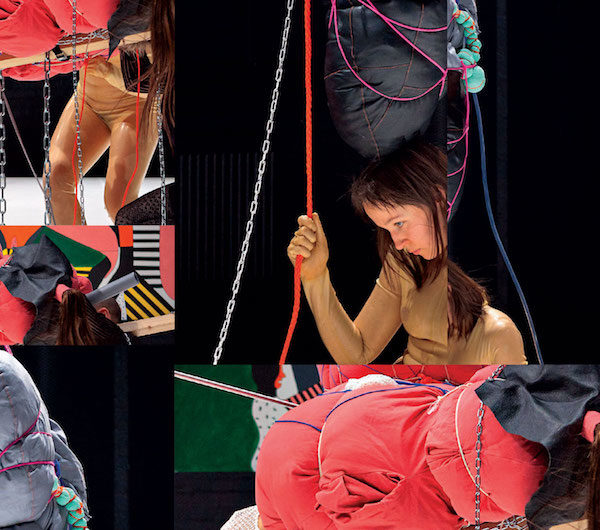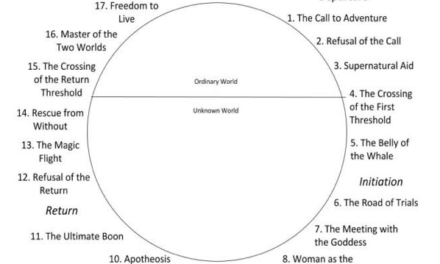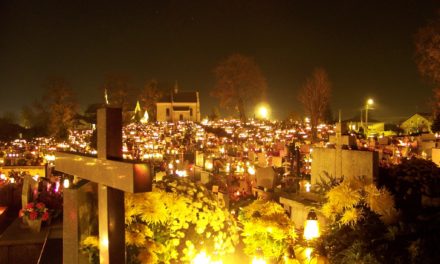Between identity and identitylessness
In this article, Elke Huybrechts regards what happened on theater stages in 2017 through a queer theoretical lens, motivated by her fondness for queering as a strategy, but also by the realization that there’s an antagonism as well as a certain elusiveness at the heart of the artistic practices she associates with it.
The past year has been dominated by #MeToo headlines. On January 21, 2017, during the Women’s March, more than four million people took to the streets all over the world to demand equal rights. Some saw this protest as the embodiment of intersectionality, a term coined by Kimberlé Crenshaw in 1989 to make clear that an individual’s societal position is determined by the interaction of different norms regarding gender, sexuality, race, class, age, and so on.1 Thus Crenshaw created an analytical tool that lays bare the complex mechanisms of discrimination. And so an intersection of seemingly antagonistic movements banded together under the banner of the Women’s March: climate activists, anti-racist organizations, women’s rights campaigners, and LGBTQIA groups.
This past theater season, such antagonistic impulses were part and parcel of the Flemish and Brussels performance world as well. The number of theater works, dance shows and performances that put gender, sexuality and race center stage was nothing if not striking. In addition, a handful of focus programs and festivals were launched with a similar angle. The Beursschouwburg (the Brussels Bourse) organized The Future is Feminist, consisting of performances, fiction and documentary films, book clubs and debate nights – an intersectional and interdisciplinary program inspired by the Women’s March. Arts Center Vooruit, in turn, kicked off its season with Make me up before we blow blow, a film and performance program exploring drag in all its manifestations. And, to give just one more example, the third edition of the WoWmen! Festival took place at Kaaitheater in March.
So, 2018 may well mark a change in attitude in the wider society, and the Flemish and Brussels arts centers clearly aligned with this trend. Racism, sexism, and colonialism also became hotly debated topics in art criticism. It remains to be seen if the artistic practices and frameworks in question can avoid getting pigeon-holed into focus programs or special issues in the seasons to come, but hopefully these developments will pave the way for long-term changes in the way Flemish and Brussels arts centers function and draw up their programs, as well as in the practice of cultural criticism.
The word “queer” originally meant “odd,” or “strange,” and though it continues to carry that connotation, it has been appropriated as a term of pride by today’s LGBTQIA community. So, what has changed since the conception of queer theory some thirty years ago? The term is no longer exclusively reserved for sexual orientations that stray from the hetero-norm, but rather applies to anything outside of any norm. In a 2005 book called What’s Queer About Queer Studies Now?2 several theorists try to come up with an answer to the title question. First and foremost, the authors interpret the term “queer” as a “political metaphor without a fixed referent.” The (a)typical thing about this chameleon word is that, in the struggle for social justice, it gets appropriated by a multitude of antagonistic movements that oppose exclusionary practices based on racialized, sexed, gendered and class-based definitions of who belongs and who doesn’t. Queerness signifies resistance to ingrained notions of identity; it is a strategy of defamiliarization and disidentification. That is why “What is queer about queer performance now?” will be the guiding question in this article. Who’s playing, what’s at play and what’s at stake?
Intersectional performativity
Performativity is a key concept that enables us to establish a connection between the social struggle for the recognition of certain identities on the one hand, and performance art on the other. In 1990, Judith Butler’s book Gender Trouble3 suggested that gender is performative, and this landmark publication helped to spawn queer theory. According to Butler, there is no such thing as a natural or original gender identity; rather, gender is a construct of western cultural meanings that get repeated and embodied in a highly stylized manner. And it is from this continuous repetition that certain gender notions derive their legitimacy and normative character.
We cannot but repeat and quote these norms, but performativity also includes the possibility of resistance and play. That’s why Butler attaches so much importance to parody and theatrical strategies like drag performances to expose gender as a cultural construct. Such subversive performances simultaneously quote and deconstruct the gender norm: there is friction between the performer’s anatomical sex, his/her/their gender identity and the gender performance, leading to a divide between the three. Thus normative gender roles are successfully denaturalized.
The first few decades following the conception of queer studies, gender performativity proved a useful concept for queer theorists, theater researches as well as theater makers: the stage was the space par excellence to queer gender norms in a performative way. When queer studies were confronted with neocolonialism, the post-Fordist economy, the war on terror and queer liberalism and nationalism (or heteronormativity) after the turn of the century, the need arose for a more complex and continuous queering. The commercial and especially the political appropriation of identities – as exemplified by the N-VA’s use of LGBT people to justify its hostility towards the Muslim population – demonstrate that queering is a never-ending battle and movement. It is crucial ‘to stay with the trouble’, as the American sociologist Donna Haraway would say, and in order to do this, we have to tackle performativity from an intersectional angle. This intersectional agenda and a resistance to appropriation are also apparent in the performances that will be discussed in what follows.
Queer disruptions

Happyland: Princess directed by Eisa Jocson in 2017. Photo by Jörg Baumann.
Eisa Jocson’s Happyland: Princess (2017) was included in the, The Future Is Feminist program at the Beursschouwburg. The Filipino choreographer puts two Disney characters on stage: two performers dressed as Snow White slowly appropriate the range of movements and the vocabulary of this fairytale princess. In previous works, Jocson focused on the movements of a pole dancer and a macho dancer–the latter, who performs bold and seductive dance moves in nightclubs, being a typical Filipino phenomenon. The various characters in Jocson’s shows evoke a complex intersection of gender notions, but also of class differences and racial clichés.
The same can be said about Princess. After all, “Happyland’ refers both to the slogans of Disney theme parks and to the slums of Manila, the capital of the Philippines. In this context, Disney serves as a symbol of the invasive American cultural imperialism that exports its ideals of femininity and beauty all over the world through characters like Snow White, yet it also represents the way in which western powers perpetuate global economic injustice.
Literary genres like the Disney fairytale are familiar to a large cultural community (due to this cultural imperialism, among other reasons). Many readers or viewers feel emotionally connected to a genre because it is a framework that they recognize and feel a part of. Yet the character of Snow White promotes problematic norms about femininity and race. Princess queers the complex structural inequality of the Snow White character in the Happyland theme park: two performers of color, a woman (Jocson herself) and a man (Russ Ligtas), both play the part of the sweet, extremely polite and obliging, soft-spoken, sometimes giggling, sometimes gently weeping, princess. The appropriation exposes the absurdity, the compulsiveness and the artificiality of this fictional character, not in the least because the anatomical sex and/or the skin color of the performers immediately clashes with the gender and racial profile that the character of Snow White demands of them.
From the very start, this queerness is mirrored in the theatrical apparatus: namely, in problems with the lights, the music or the audio. These technical issues seem to symbolize the antagonistic forces that try to punch holes in this cultural ideal. Even the performers themselves start to malfunction after a while: their movements spin out of control and they wrench off their princess dresses while crawling on the floor. All of a sudden, the voices of the Snow Whites take on a different timbre and the performers start to speak Spanish. Thus the performance queers the structural violence, sexism and racism encouraged by the character of Snow White and the genre of the Disney fairytale in general. The effect Princess is after is not familiarity but disruption–namely, that of the systems constructing harmful identities.
“Princess queers the structural violence, sexism and racism encouraged by the character of Snow White and the genre of the Disney fairytale in general.”
Yet the deconstruction does not immediately reveal an ‘authentic’ or ‘original’ identity: the Spanish language signals a “second” historical, colonial layer, an imperial remnant of the Spanish rule in the Philippines which lasted more than three hundred years. In addition, the performers become Snow White-like again in the way they talk and behave at the end of the performance, as if to show that deconstruction is not the endpoint, and that somehow this Disney character has nevertheless become a part of a shared culture. Princess appeals to the complexity and multilayeredness of identities, but also shows how the construction of the “identity” of a character such as Snow White is embedded in a capitalist system in which bodies become consumer goods and racial profiling creates economic injustice, both globally and locally. Jocson is one of the few who succeed in uniting such Marxist criticisms with queering the concept of identity in her performances, proving that the two are not necessarily at odds.
Dark matter
Ligia Lewis’ Minor matter (2016), which was staged at Kaaitheater, is the second part of a trilogy on blackness. It is a piece for three black performers, which the American choreographer created as a response to the Black Lives Matter protest movement. Its title draws a connection between materiality and minorities, in this case, the materiality of black bodies and the space of the black box. The performance contains several phrases from choreographies by Merce Cunningham, William Forsythe, and Maurice Béjart. Yet Lewis weaves new movement material into these pieces from the white dance canon (and prime examples of abstract or minimalist choreographies at that), such as an energetic two-step, a wrestling match and the death drop. As a result, Minor matter becomes a highly diverse performance that leaves room for different movement styles as well as music genres ranging from baroque to hip-hop.
Minor matter alternates between these phrases, and scenes in which the performers discuss their (failed) ambitions. At times, they also move towards the edges of the stage: they form human pyramids on the floor and against the wall, they speak into microphones hanging from the walls, and they continually create new body formations that disintegrate again. Thus, Minor matter explores bodily and spatial boundaries and materiality. The opening scene sets the tone: the stage is bathed in red light and is empty, except for a huge cloud of mist. Lewis’ voice resounds from the speakers: she recites the poem Dreamtalk by the Nigerian poet Remi Raji, in which a lyrical “I” addresses a “you”–a rhetorical device called apostrophe. The poem evokes the impossible love between the “I” and the “you” character. The former communicates with the latter from beyond death, from a realm of shadows, and talks about her/his wish for a reunion that can never take place. “I will like to turn you inside out and step into your skin” is the poem’s opening line, which, in the context of the performance, could refer to the audience’s impossibility to identify with the disembodied voice that speaks from “beyond death.”
Furthermore, the voice in Raji’s poem mentions “the crossroads” where speaker and listener will meet. In intersectional theory, the crossroads (intersection) is a metaphor for the different “identity paths” traveling through an individual. Yet an encounter at a crossroads, especially one between the white gaze and the black body, can be fatal.4 Black bodies are marked by that white gaze and regarded as inferior (“minor matter”).

Ligia Lewis, Minor matter Photo Credit: Martha Glenn
It comes as no surprise, then, that Fred Moten and Achille Mbembe, two important postcolonial thinkers, believe nothingness and death can play a key role. Both concepts open up a possible space of resistance against a society that marginalizes black subjects, as is also demonstrated by the speeches the performers deliver to the audience. By hybridizing the white dance canon on the one hand, and by taking social death and the materiality of the black box and black bodies as a starting point for a dark ontology on the other, they conceptualize a space that resists violent appropriation. Minor matter testifies to the impossibility of, and the unwillingness to abstract the black body. Throughout the performance, the black box functions as a space in which something else becomes imaginable: a meeting place in which the traditional boundaries between bodies, cruelty/optimism, abstract/concrete and death/life crumble. So, there’s a dark side to this queerness. It is an attempt to create a new agency and energy from a social position that has been declared dead and that lingers in dark corners, and to build a poetic universe from dark matter.
“Minor matter testifies to the impossibility of, and the unwillingness to abstract the black body.”
A political ecology of things
Both NEXT Festival (in November) and the Beursschouwburg (in March) programmed Blab by the Finish choreographer and visual artist Sonja Jokiniemi, who puts three performers on stage, surrounded by an amalgamation of things: iron bars, wool, rope and other fabrics. Some of these objects are phallus-shaped, others look like synthetic uteruses, but most of them are hard to categorize – just like the performance itself, Blab being both installation and performance. Not much happens on stage, except for a few interactions between the objects and the performers, who are sometimes neutral, sometimes messy and sexual. Every now and then, external forces seem to be at work: near the end, the performers’ movements become jerky, and some of their actions have an aggressive tinge.
Not coincidentally, Blab refers to a baby’s prelinguistic phase, when it has only nonsense words at its disposal to communicate with its surroundings. The child’s interaction with those surroundings, at that point, is mainly physical: a baby explores its world by touching everything it encounters with every possible body part. Jane Bennett, who argues for a revaluation of the agency of matter in Vibrant Matter, draws a link between a child’s world and a political ecology of things. After all, for children it is self-evident that non-human entities also “live.”5 New Materialism, the philosophical movement to which Bennett and many others belong, stemmed from the realization that we need a more sustainable approach to matter (as opposed to production, consumption, exploitation, etc.) if we want to avoid destroying all life on this planet. Blab creates a political ecology of things, dividing the vital materiality of both human and non-human entities into a non-hierarchal network of sustainable interconnections and interactions. In Blab, every action is an interaction: touching objects equals being touched by the materiality of those objects. When, for instance, the performers put iron bars in their mouths, they penetrate these objects as well as being penetrated by them.
“Blab calls for another definition of human identity, while simultaneously trying to annul it.”
Watching Blab, then, becomes an affective affair in which the viewer is receptive to the stimuli and vibrations emanating from vital materiality. Like Minor matter, Blab calls for a new approach to bodily materiality as well as eroticism. In Blab’s ecology of things, matter and longing are the phenomena that connect a human being to its surroundings. Similarly, Blab requests a queering, another definition of human identity, while simultaneously trying to annul it. The vibrations that run through Blab are both erotic and impersonal, an affection between people-things, or a field of forces that do not tend to congeal into subjectivity6.
New approach
At the beginning of the nineties, queering was mainly a form of irony and camp. Back then, drag performances and queer musicals were the performances par excellence to theatrically evoke gender norms and heteronormativity, and to place these concepts between quotation marks. In a way, Eisa Jocson’s Princess continues this tradition of ironically mimicking the norm, but she pushes things further, embedding her piece in a historical and glocal reality. Using the genre of the Disney fairytale and especially the Disney princess Snow White, she interweaves class inequality with gender norms and racial clichés, which operate on so many levels. Queerness becomes an antagonistic force of systematic and systemic disruption here, affecting all these different aspects. In addition, Jocson queers the concept of identity by showing that it’s always a historical construct and never once seems to stop being a construct.
“Queering has become an indispensable strategy in a complex world in which norms and powers form more intricate structures than ever before.”
Queering has become an indispensable strategy in a complex world in which norms and powers form more intricate structures than ever before. The term offers a way to talk about an intersection of various critical positions, including a feminist, Marxist, ecological and/or postcolonial perspective. In Princess, Minor matter, as well as Blab, queering comes down to problematizing deeply ingrained, exclusionary identity norms. But, contrary to Princess, only little irony and theatrically are left in Minor matter and Blab. Instead, the latter pieces look for an ungraspable form, between identity and identitylessness, between human, thing and space, between life and death. After all, though Minor matter and Blab’s political angles differ, both performances call for a new approach to materiality, using this approach to create an autonomous space governed by its own laws and norms, which differ widely from the ones that they oppose.
Translated by Lies Xhonneux.
“Queering has become an indispensable strategy in a complex world in which norms and powers form more intricate structures than ever before.”
1 Crenshaw, Kimberlé Williams, ‘Mapping the Margins: Intersectionality, Identity Politics, and Violence Against Women of Color’, in Bailey, Alison, Cuomo, Chris (ed.) The Feminist Philosophy Reader, McGraw-Hill, 2008, pp. 279-309.
2 Eng, David, Halberstam, Jack and Muñoz, Esteban, ‘Introduction’, in What’s Queer About Queer Studies Now?, Duke University Press, 2005, pp. 1-17. (2005).
3 Butler, Judith, Gender Trouble, Routledge, 1990.
4 Nicolay, Daan, ‘Witte blik, zwarte dood’, in Etcetera, 151, 2017, pp. 18-22.
5 Bennett, Jane, Vibrant Matter. A Political Ecology of Things. Duke University Press, 2009.
6 ibidem.
This article originally appeared in Etcetera on January 8, 2019, and has been reposted with permission.
This post was written by the author in their personal capacity.The opinions expressed in this article are the author’s own and do not reflect the view of The Theatre Times, their staff or collaborators.
This post was written by Elke Huybrechts.
The views expressed here belong to the author and do not necessarily reflect our views and opinions.

















